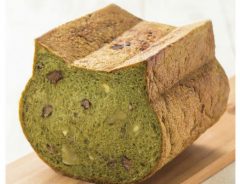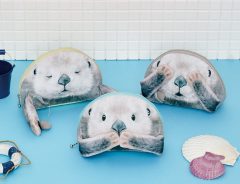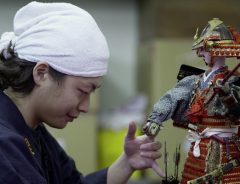- Source:
- Kappa Zushi / Hamazushi / Kinisoku / Sushiro
- Tags:
- Conveyor belt sushi / Food / Japan / Kaiten / Kaiten-zushi / Sushi
Related Article
-

Soar like an eagle at this adventure park in central Japan
-

Japan’s Adorable Cat-Shaped Bread Slices Return With Matcha And Black Kitten Varieties
-

Too Cute! Kindhearted Boy Refuses To Move Lounging Cat As He Studies
-

Japan’s most unique National Highway is a staircase
-

Adorably carry your goods with surprised otter bags with movable arms
-

Karakuri Puppets: The Foundation For Japan’s Advanced Robot Technology



It's always a bit interesting when someone claims to not like sushi because they can't handle raw fish. While that preference is understandable, contrary to popular belief, there is nothing about the definition of sushi that dictates a need to use fish, raw or cooked. Sushi is simply constructed from using shari (しゃり), or sushi rice, and neta (ネタ), the ingredient used as topping. So if you have a Japanese friend ragging on your fondness for some Westernized roll that has been friend and covered in chipotle sauce, perhaps you can present them with that obnoxious technicality, although your first line of defense should be pointing out corn and mayonnaise lathered shrimp pizza in Japan.
Source: Shutterstock
All joking aside, despite different ways of preparation, what many think of when it comes to an example of authentic sushi is typically traditional nigiri (hand pressed sushi) that a seasoned sushi chef will no doubt serve you if you leave your order up to them. Truth be told, there is something about the simplicity and elegance of "real" sushi that is just unmatched by variations and frills applied nowadays.
While there is no better place to have that awesome culinary experience than Japan, the country plenty of sushi restaurants that will blow-torch cook your topping, fish or not, and serve kinds of sushi that one would not immediately associate with Japan. You won't find these in high-grade sushi dens, but once you get to what Japanese commonly refer to as "B-level gourmet" restaurants, particularly conveyor belt sushi restaurants (回転寿司, kaiten-zushi), you'll find some pretty bold toppings.
So there has been some discussion sparked by a Japanese net user, who hadn't been to a kaiten-zushi restaurant in a while, and was a bit surprised at how "wild" sushi toppings have been getting. For some examples let's take a look at the current menu of popular kaiten-zushi restaurant, Hamazushi.
Source: Hamazushi
From left to right on the top row: Roast beef with garlic sauce, Roast beef with garlic sauce with mountain wasabi, and beef kalbi. The bottom has dry-cured ham with avocado, dry-cured ham with onions, and black pepper-crusted duck.
Tempura sushi is something you would usually expect to see in non-Japanese countries, but it is quite popular at kaiten-zushi places, pictured here in shrimp and squid forms, and even a squid tempura sushi with garlic mayonnaise. The bottom is imitation crab, again offered with garlic mayonnaise.
Source: Hamazushi
These toppings aren't quite so surprising, but are a good look at broiled fish offerings. Perhaps the most notable are the broiled salmon with cheese and broiled egg with cheese.
Source: Hamazushi
You don't just see these at hamazushi, of course. Below we have hamburg steak with mayonnaise from Kappa-zushi and shrimp with basil cheese sauce from Sushiro (top), as well as dolce-pork bacon, and meatball gunkan from Sushiro.
Source: Hamazushi/Sushiro
So what's the verdict on these kind of toppings? To be honest, at kaiten-zushi restaurants in general, menu items like this have been a norm for quite a while, only just recently taking on more adventurous toppings. When one steps in, they aren't expecting a traditional sushi experience that has been painstakingly prepared, and instead appreciate a speedy way to enjoy the food, as well an opportunity for kids who have not yet developed a taste for sushi to join in on the fun. If it tastes good, and everyone is honest about what is on their plate, then there's not much to fuss about!